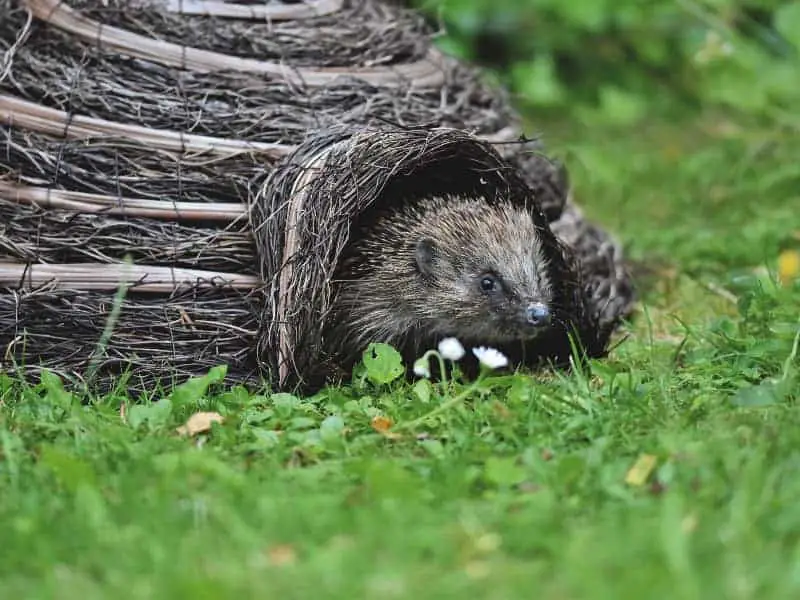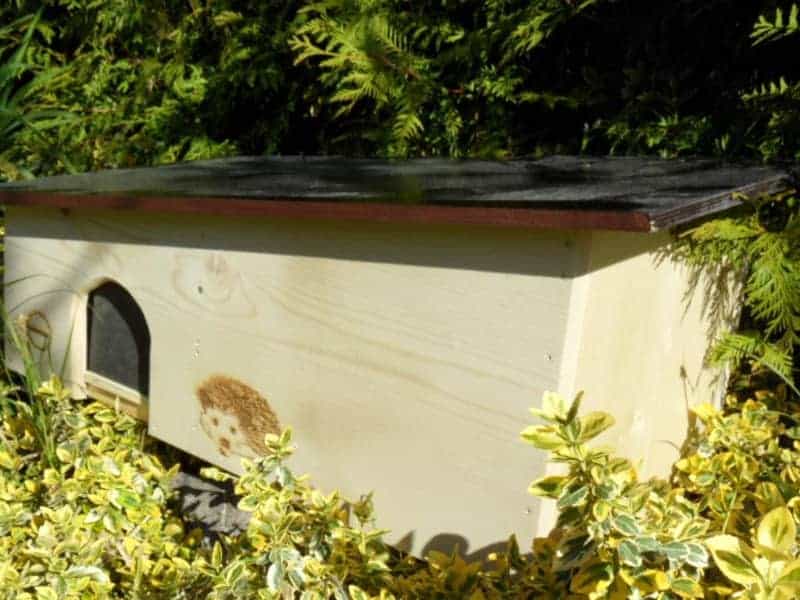
Can hedgehogs climb
The question: "Can hedgehogs climb?" may seem strange at first glance, but is more than justified when you think about the habitat and habits of these animals. With this blogpost, I would like to shed light on the subject and discuss various aspects surrounding the climbing ability of hedgehogs. The focus is on the scientific perspective, but also practical advice for everyday life.
Why the question "Can hedgehogs climb?" is interesting
Hedgehogs are widespread but often misunderstood animals. The question of whether they can climb not only raises interesting biological questions, but also has practical significance for animal lovers, garden owners and conservationists. Many people are curious about how these animals overcome obstacles in their natural environment or in human-designed habitats. Can a hedgehog climb a fence, for example? Or does he even climb trees to reach food? These and similar questions make the topic both fascinating and relevant.
General information about hedgehogs
The European hedgehog (Erinaceus europaeus) is probably the best known representative of the spiny animals in Germany. It has a striking exterior with about 5,000 to 7,000 spines and is primarily active at dusk and night. The common perception of hedgehogs usually describes them as ground-hugging creatures that curl up in the face of danger. But how flexible are hedgehogs really in their locomotion? Can they also move vertically and climb? These and other questions will be answered in the course of this blog post.
Objective of the blogpost
The main aim of this blog post is to provide comprehensive and sound information on whether hedgehogs can climb or not. Not only will scientific findings be addressed, but also practical tips for dealing with hedgehogs in the garden and nature. The findings should not only broaden the understanding of these fascinating animals, but also help to better understand and, if necessary, improve their living conditions.
Basic anatomy of the hedgehog
An in-depth understanding of hedgehog anatomy is critical to grasping the extent to which climbing may be possible or even necessary for these animals. In this section, we take a look at the most important anatomical features that affect hedgehog locomotion.
Spines and their function
The hedgehog's spines are probably its most striking feature. They are made of keratin, the same material that makes up human hair and nails. These spines are primarily for protection from predators. They are hollow and filled with air, which makes them relatively light. At first glance, one might assume that the spines are a hindrance to climbing, but in fact they could also have a supportive function. For example, they could be used to cushion the animal during a fall or to find a foothold on the bark of a tree. It is important to note, however, that the spines alone are not sufficient to give the hedgehog true climbing abilities.
Limbs and movement
Hedgehogs have rather short legs and a compact build, which makes them primarily good runners and burrowers. The musculature of the limbs is so pronounced that they can run easily, but they can also curl up quickly. The paws are small and not particularly adapted to grasping. Therefore, hedgehogs are not usually capable of climbing like squirrels or cats.
They can overcome smaller obstacles such as rocks or roots, but their anatomical characteristics limit them in terms of true climbing abilities.
Sensors and perception
Hedgehogs have an excellent sense of smell, which helps them find food. Their hearing is also well developed, while their vision is rather limited. These sensory abilities are primarily designed for ground-level locomotion and orientation. The hedgehog lacks a strong sense of height and distance, typical of climbing animals. This suggests that its sensory abilities are not optimized for climbing.
Hedgehog habitat and geographical distribution
An animal's habitat plays a critical role in the development of its abilities and adaptations. Therefore, it is useful to look at the geographic distribution and typical habitats of hedgehogs to better understand their potential climbing abilities.
Where do hedgehogs mainly live?
Hedgehogs are widespread in Europe, but are also found in parts of Asia and Africa. In Germany, they are mainly found in gardens, parks and forests. They prefer areas with dense vegetation and sufficient hiding places, such as bushes and hedges. In these habitats they find food and protection from predators.
They do not seem to have a particular preference for heights or trees, indicating that climbing is not one of their primary means of locomotion.
Soil composition and habitat conditions
Soil texture plays an important role in hedgehog locomotion. They like soft, humus-rich soils that allow them to easily dig for food. Hedgehogs are also excellent swimmers and can run well, indicating that they tend to move on level or slightly uneven surfaces.
There is no evidence that they prefer areas with difficult terrain such as steep hills or cliffs that would require climbing skills.
Hedgehogs in urban and rural areas
In recent decades, the hedgehog's habitat has shifted more and more towards urban areas. Here they often live in gardens, parks and green spaces. The presence of fences and walls in urban areas might increase the need for climbing skills, but there is little evidence that hedgehogs are actually able to overcome such obstacles by climbing.
Mostly they use already existing passages or dig their way under obstacles. According to these findings, we can say that the natural habitat and geographical distribution of hedgehogs provide little evidence for developed climbing abilities.
Locomotion skills
While we have already discussed some aspects of hedgehog anatomy and habitat, we will now focus on their specific locomotion abilities. These offer important insights into whether or not climbing is even an option for these animals.
Roles and its function
The ability to curl up is one of the hedgehog's characteristic features. When it feels threatened, it can tense its muscles so that its body forms an almost perfect sphere. This causes the spines to point outward, providing effective protection from predators. However, this ability is more passive and is not used for locomotion. While curling can save the hedgehog's life in many situations, it is rather unsuitable for climbing. A curled hedgehog loses control of its limbs and cannot move actively.
Running and speed
Hedgehogs are surprisingly good runners. With their short but powerful legs, they can reach speeds of up to 6 km/h. They are agile and can move quickly through dense undergrowth. This ability to run fast allows them to quickly flee from danger and seek food. Although this makes them good ground dwellers, this specialized form of locomotion means that they have developed few adaptations for climbing.
Swimming: Myths and reality
There are many myths about hedgehogs swimming abilities, but the reality is that hedgehogs are quite good swimmers. They can easily cross small bodies of water and are adept at doing so. However, swimming requires a lot of energy and is more strenuous for the hedgehog than running. As with running, swimming abilities are primarily optimized for horizontal locomotion.
The lack of specialized webbed feet or other adaptations indicates that swimming is more of a secondary mode of locomotion for the hedgehog and also says little about its ability to climb.

The question in focus: Can hedgehogs climb?
Now that we have comprehensively dealt with the anatomical features, habitat and locomotion abilities of the hedgehog, let us turn to the core question of this blog post: Can hedgehogs climb?
Observations and studies
Scientific studies and observations in the wild give us valuable insights into the hedgehog's abilities. To date, however, there have been no conclusive studies demonstrating that hedgehogs can actually climb. Most research focuses on ground locomotion, particularly running and swimming. Occasional reports of hedgehogs climbing small obstacles are largely anecdotal and not supported by scientific evidence. Therefore, the general consensus remains that hedgehogs are not climbers.
Physical limitations of hedgehogs
As mentioned in previous sections, the hedgehog's anatomy suggests that it is more adapted to ground-based locomotion. Its short legs and small paws, optimized for digging and running, do not provide a good foundation for climbing. The spines, although having some protective function, could even be a hindrance when climbing, as they represent additional weight and could throw the animal off balance.
Adaptability
Hedgehogs are adaptable animals and have proven that they can hold their own in different habitats. Nevertheless, climbing does not seem to be one of the skills they have developed during evolution. While they are able to use their environment effectively and survive in urban areas, they tend to use their running, digging, and swimming abilities rather than climbing.
The unequivocal answer to the question of whether hedgehogs can climb is therefore: No, at least not in the sense in which we understand climbing. Their anatomical characteristics, habitat and locomotion abilities are all geared towards a ground-level existence.
Hedgehogs and obstacles
The ability to deal with obstacles is crucial for any animal in the wild. Since we have already established that hedgehogs are unlikely to be able to climb, it is interesting to study how they deal with different types of obstacles found in their natural or man-made habitat.
Natural obstacles in the wilderness
In the wild, hedgehogs encounter a variety of obstacles such as rivers, bushes, rocks, and even small ravines. Since climbing is not an option for them, they usually use their ability to run and swim to overcome them. Sometimes they will burrow under an obstacle or find pre-existing passageways. Their excellent sense of direction and ability to adapt to different conditions play an essential role here.
Artificial barriers in urban areas
In urban areas hedgehogs encounter a completely different kind of obstacles: Fences, walls, and roads. While they are unable to climb vertical barriers like walls, they use other strategies to deal with these obstacles. They can squeeze through gaps or use existing tunnels and passageways. They can also cross roads, though this poses significant risks from traffic.
Overcoming possibilities
Hedgehogs are inventive animals and use a variety of strategies to overcome obstacles. While they may not be able to climb, they can sometimes overcome small obstacles by taking a running start and a small jump. In some cases, they also use their burrowing ability to make their way under an obstacle. Their adaptability and intelligence help them find effective ways to overcome obstacles, even when climbing is not an option.
This section illustrates that although hedgehogs cannot climb, they have nevertheless developed a variety of strategies to overcome obstacles. Their other locomotion abilities and their adaptability play an important role.
Hedgehog in garden
Hedgehogs are frequent visitors to gardens, and many people are fascinated by these prickly little creatures. But how do they cope with the obstacles that a garden can present, and how can we humans help them? These questions are particularly interesting because they give us clues as to whether hedgehogs are able to overcome certain barriers by climbing or other methods.
Typical obstacles
A garden can present a number of challenges for a hedgehog. Typical obstacles include fences, stairs, walls, and sometimes even ponds. Most of these obstacles are difficult for a hedgehog to climb, especially if they are higher than a few inches. Since hedgehogs cannot climb, they often look for other ways to get around these barriers, such as through gaps in the fence or under walls.
How can people help?
There are several ways people can make life easier for hedgehogs in a garden. Providing hedgehog houses or shelter, creating hedgehog runs through the fence, and removing hazards such as netting or poison bait are just a few examples. It is also helpful to provide access to fresh water, primarily during hot summer months. Creating passageways under fences and walls can also greatly improve hedgehog mobility in the garden.
Suitability of climbing aids
Since hedgehogs cannot climb, climbing aids are usually not the best solution for them. Instead, it is more effective to use other methods to help the hedgehog overcome obstacles. However, ramps or small stairs can be a possible aid if they are stable enough and have a suitable angle. Nevertheless, these aids should always be used in combination with other methods to provide the hedgehog with a variety of ways to overcome obstacles.
In this section, we have seen that gardens present a unique set of challenges for hedgehogs, and there are several ways we can help them. From providing shelter and water to special passageways, the options are many to provide a safe and accessible environment for these interesting animals.
Conclusion: Can hedgehogs climb
Having taken a fascinating journey through the world of hedgehogs and their abilities to move and overcome obstacles, it is now time to summarize our findings and offer some practical advice for dealing with these prickly friends.
Summary of the findings
The core question of this blog post was: Can hedgehogs climb? And the answer is pretty clear: No, hedgehogs are not made for climbing. Their anatomical structure, locomotion abilities, and natural instincts are more geared toward a ground-based lifestyle. They are able to negotiate a variety of obstacles by running, rolling, and occasionally swimming, but climbing is not one of their skills.
Practical advice
For anyone who has hedgehogs in their yard or near their home and wants to help them, there are some simple but effective measures. First, create passageways under fences and walls to allow the animals to move freely. Second, provide fresh water and possibly hedgehog-friendly food.
And third, avoid the use of poison and other dangerous substances that could be harmful to hedgehogs. If you think a hedgehog is stuck or needs help, it is best to consult a professional instead of intervening yourself.
This blog post has hopefully cleared up some misconceptions and provided useful information about how hedgehogs get around and deal with obstacles. Even though they can't climb, they are amazingly adaptable and fascinating animals that deserve to be protected and supported.
Author

-
Garden animal - A life with nature
Welcome to my animal blog! My name is Dirk and I am happy to take you on my journey through the fascinating world of animals and gardening.
Born 54 years ago, I have had an insatiable curiosity for the animal world around me since childhood. Although I have moved professionally in other industries, my true passion has always been animals and nature. It is remarkable how a small garden has become such an important part of my life.
Many of my fondest memories are associated with the animals that share our home. Whether it's the curious squirrels that scurry across the trees in the morning, the colorful variety of birds that visit our feeders, or the busy bees and butterflies that pollinate our flowers, every moment with them is invaluable to me.
This blog is my contribution to share my experiences, discoveries and insights with like-minded people. Here I will share stories of unforgettable encounters with animals, give tips on gardening and creating wildlife-friendly habitats, and take you on my journeys through nature.
Thank you so much for being here!
Cordial,
Dirk aka garden animal
Last posts
- 27. February 2024PetsVeganes Hundefutter – Grün und Gesund?
- 18. January 2024ChickensOregano für Hühner
- November 27, 2023HamsterDiurnal hamsters
- November 24, 2023HamsterHamster hammock






